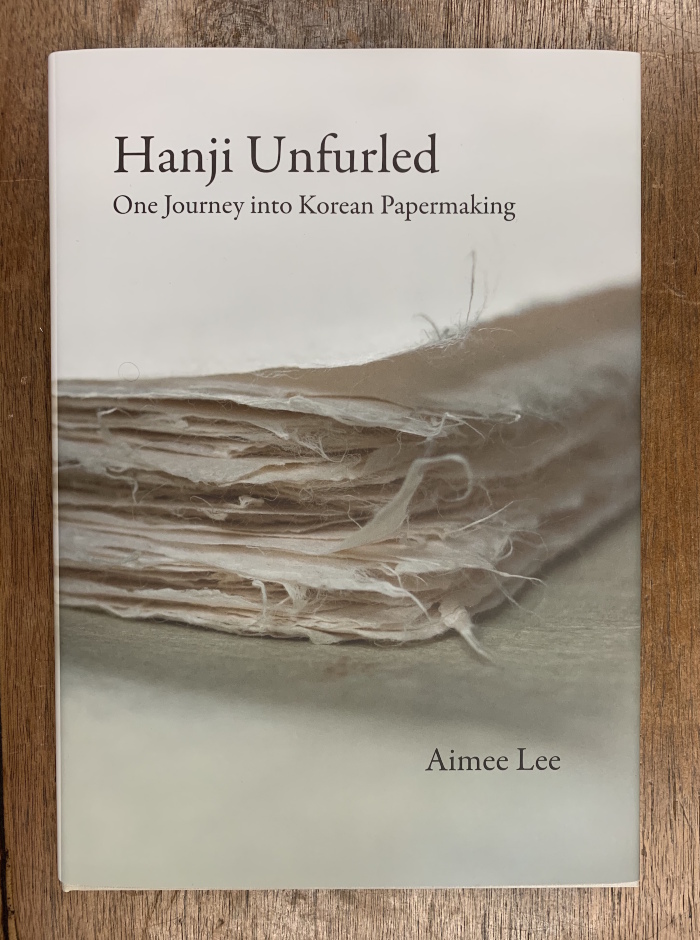Collections
Hanji unfurled : one journey into Korean papermaking / Aimee Lee
Books
"In this first English-language book about hanji, Aimee Lee shares her experience as a Korean–American artist and Fulbright fellow on her search for a traditional Korean papermaking teacher. Of the handful of American hanji researchers, she is the only one to have interacted with Koreans in their own language while simultaneously learning the craft. This book follows her journey as she met papermakers, scholars, and artists from bustling cities to traditional Korean villages to Buddhist temples to island outposts. Not only did she encounter the few remaining papermakers who still practice webal tteugi, the indigenous Korean sheet-formation method, but she found teachers of a whole array of allied crafts that include jiseung—cording and weaving hanji, joomchi—texturing and felting hanji, natural dyeing, and calligraphy. She traveled from the studios of living treasures to the homes of ordinary Koreans, illuminating an often-misunderstood culture through stories from its keepers of traditional heritage. To learn more about the author, click here."--publisher's note
Table of contents:
ch. One About Hanji -- Hanji's characteristics and applications -- Comparisons of East Asian papers -- About the tree -- History of Korean papermaking -- Contemporary pressures on hanji --
ch. Two Visit to a Hanji Master --
ch. Three Finding a Hanji Teacher -- Cases against an apprentice -- Starting the search -- Youngdam Sunim -- Wonju -- Back to Seoul --
ch. Four Early Apprenticeship Days -- Jang family -- Papermill grounds -- My first week -- Bark preparation --
ch. Five Learning How to Make Hanji -- The first dip -- Screen-making in Jeonju -- Standing at the vat -- Drying hanji -- New pace in Mr. Jang's absence -- Final batch -- Wrapping up --
ch. Six Wandering into Jiseung -- Prelude -- Jiseung's effects on the body -- Foundation of cording -- Weaving -- Unexpected field trip -- Final touches --
ch. Seven Natural Dyeing -- A colorful refuge in Seoul -- Persimmon dyeing in Jeju --
ch. Eight Felting Hanji through Joomchi --
ch. Nine Calligraphy's Chance Encounters --
ch. Ten Hanji Today -- Purchasing hanji -- Artists who use hanji -- Hanji in the academy -- Where to learn to make hanji -- Moving forward while looking back -- Final thoughts --
Epilogue: Korean Papermaking Goes West -- Bark preparation, cooking, and beating equipment -- Sheet-forming equipment -- Vat and accessories -- Drying unit -- A new home for hanji
